 |
||||||||||||||||||||||||
 |
 |
|||||||||||||||||||||||
 |
||||||||||||||||||||||||
 |
 |
 |
 |
|||||||||||||||||||||
| 2015 CIRCLES | 2014 CIRCLES | 2013 CIRCLES | 2012 CIRCLES | |||||||||||||||||||||
|
||||||||||||||||||||||||
 |
 |
|||||||||||||||||||||||

|
Cley Hill, Wiltshire, 10th August 2023 This formation lies only a couple of tramlines away from where one of the greatest circles of all time appeared in 2010. 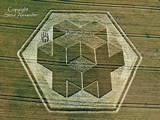 We have to talk about size because the outer ring is absolutely massive! With the central circle measuring exactly 98ft in diameter, the outer ring has been calculated, by Peter Van Den Burg, as measuring 564.5ft. Walking the outer ring, at a steady pace, takes almost 8 minutes and one side of it simply cannot be seen from the other. If there is a down side to this, it is that, as I witnessed when visititng the formation, there might be a temptation to walk straight through standing crop to reach the ring. Visitors MUST be respectful and only enter and exit the ring via the single set of tramlines that run through the central circle. In surprisingly late barley, the laid stems within the central circle range from completely flat to completely standing. There is a huge contrast between areas of the laid crop, which has been swirled and flattened in an incredibly fluid manner. 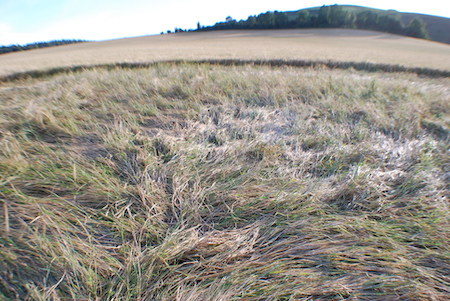 Stems flow in literally every direction, in all areas of the circle. Although aerial photos indicate more order, with an anti-clockwise flow nearer to the centre changing into a clockwise 'sweep' towards the perimeter, this is impossible to discern on the ground. 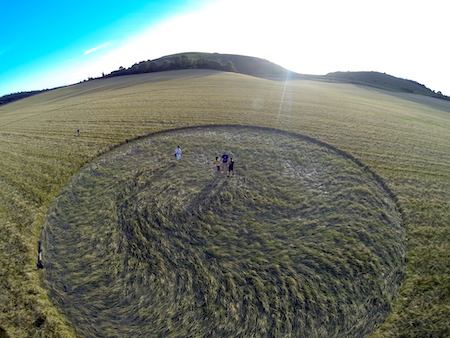 The condidtion of laid stems is also varied and is perhaps a result of the ripening nature of the barley in this field. There is lots of green, unripe crop, interspersed with riper stems, which are more prone to permanent flattening. 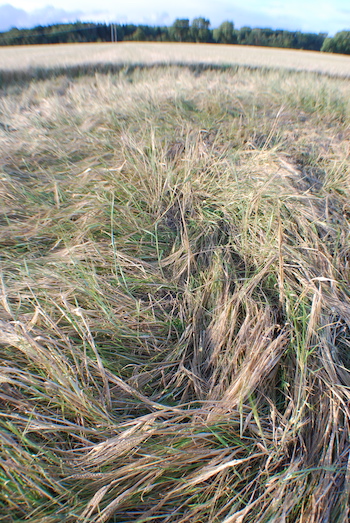 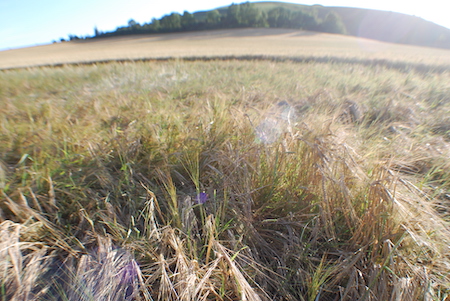 Slightly off-centre, there is a neat and subtle nest, formed from barley stems that have been twisted clockwise, leaving a gap in the centre. This feature is fragile and will need to be avoided by visitors keen to reach the very centre of the circle. This area displays the clearest flow direction, stems having been swept into the nest from a clockwise direction. 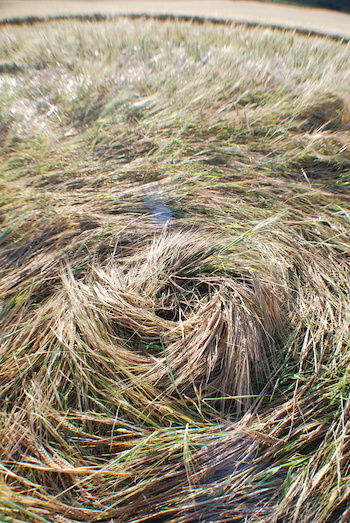 The clockwise flow of stems in the outer ring contains a few notable features. The first is an apparent division of stems into two halves, an outer and inner ring. While the direction of flow is the same, there is a central 'tuft' running around the whole ring. This divides stems which generally are flatter on the outside, nearest to the perimeter of the circle, from those closer to the centre, which seem to have been laid more gently. 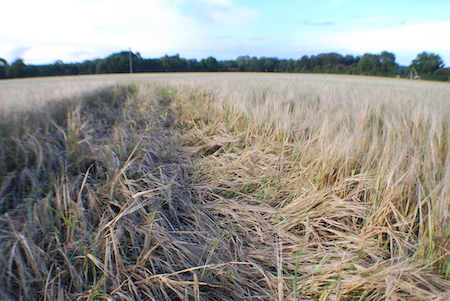 Also in the outer ring, there are many sections where the flow of stems appears to 'weave' left and right, rather than flowing straight ahead. 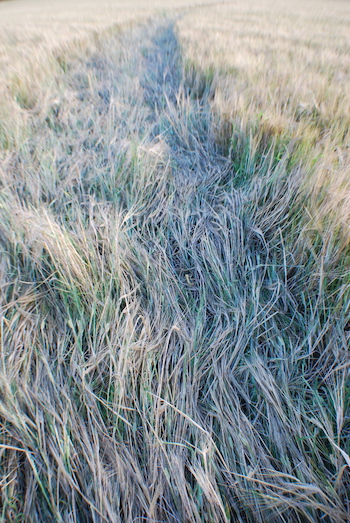 Where laid stems meet standing crop, they are rarely flat, but, as we have seen so often this year and in seasons past, tend to be 'brushed' up the sides. The definition in the overall design is clear and crisp, but on the ground, it is surprising that this effect is created, given the lack of crispness on the ground. 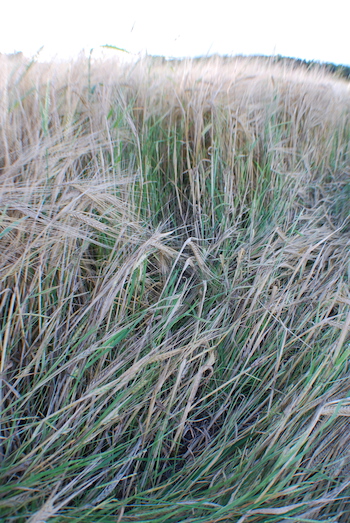 The position of the design is a feature on the ground. While it appears that the ring touches the tramline furthest from Cley Hill, in fact, there is an amazingly fine line of standing stems between the outer edge of the ring and the outer tramline. This level of detail is real finesse and so subtle that it is very hard to see, even at ground level. 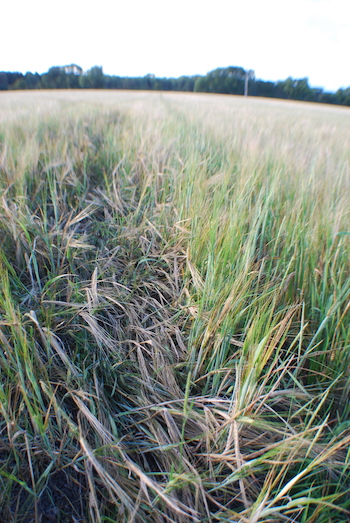 A final, tiny, point of note is a field mouse nest, undamaged, still held gently above the ground within the laid stems of the outer ring. Another example, perhaps, of the gentleness we often discuss in relation to how stems are physically laid within so many of these formations. 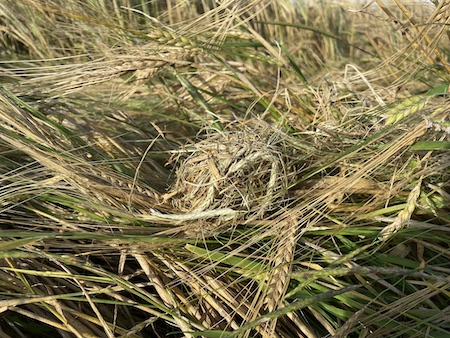 Crop Circle Summary
Alternative Websites |

